Clean Comfort Cooking with New Morning Market
Mastering the art of roasting a chicken became an obsession of mine shortly after moving to Connecticut 20 years ago. Growing up with a strong southern influence, I had become pretty confident in my deep frying skills at an early age. But there was something about a whole roasted chicken that seemed like a New England jewel in the cooking crown that I just had to grab for my own.
And while the steps and ingredients in some of my favorite cookbooks made this task seem daunting and a cooking adventure for only the pros, I have a secret for you. It’s super easy to roast a whole chicken. It’s maybe the easiest way to cook chicken. But keep that secret between you and me. The writers of my favorite cookbooks would be devastated to know that we figured out tricks that save loads of money and time while still serving up a 5-Star dish.
And here’s the best part. One roasted chicken can turn into multiple meals – a roasted chicken supper, chicken salad made with the leftovers, and bone broth that can be frozen and used for future recipes.
Julie Droege is the Communications Director at New Morning Market and a home cook with 20+ years in the natural foods world. Her favorite cooking partner is her 11-year-old daughter, Lena, who always provides inspiration and brutally honest feedback for all of her dishes. Julie promises to share only the recipes that get two thumbs up from Lena.
Roasted Chicken 101
Ingredients
-
1 whole chicken
-
¼ cup of butter, melted
-
2 tbsp + 2 tsp of salt
-
2 tsp + ½ tsp of pepper
-
1 tbsp of roughly chopped fresh herbs such as sage, thyme, and rosemary
-
Extra virgin olive oil
-
1 cup of chicken or vegetable broth
-
1 head of garlic with the top cut off (revealing all of the cloves)
-
Butcher twine
-
1 whole onion, halved
-
1 celery stalks
-
3 carrots

Directions
Step 1
Preheat oven to 350 degrees
Step 2
Place whole chicken into a roasting or baking pan with high sides
Step 3
Pour melted butter on top of the chicken
Step 4
Using a pastry or basting brush, make sure the chicken is fully coated with the melted butter
Step 5
Sprinkle 2 tbsp of salt and 2 tsp of pepper on the chicken
Step 6
Using your hands, rub the salt and pepper mixture into the chicken
Step 7
Top the chicken with additional salt, pepper, and fresh herbs.
Step 8
Drizzle olive oil on top of the chicken
Step 9
Add broth to the bottom of the roasting pan
Step 10
Place the whole garlic head in the cavity of the chicken
Step 11
Tie chicken legs together with butcher twine
Step 12
Add the onion, celery, and carrots to the roasting pan
Step 13
Place the chicken into the oven for 2 hrs and 15 minutes (until it reaches an internal temp of 165 degrees)
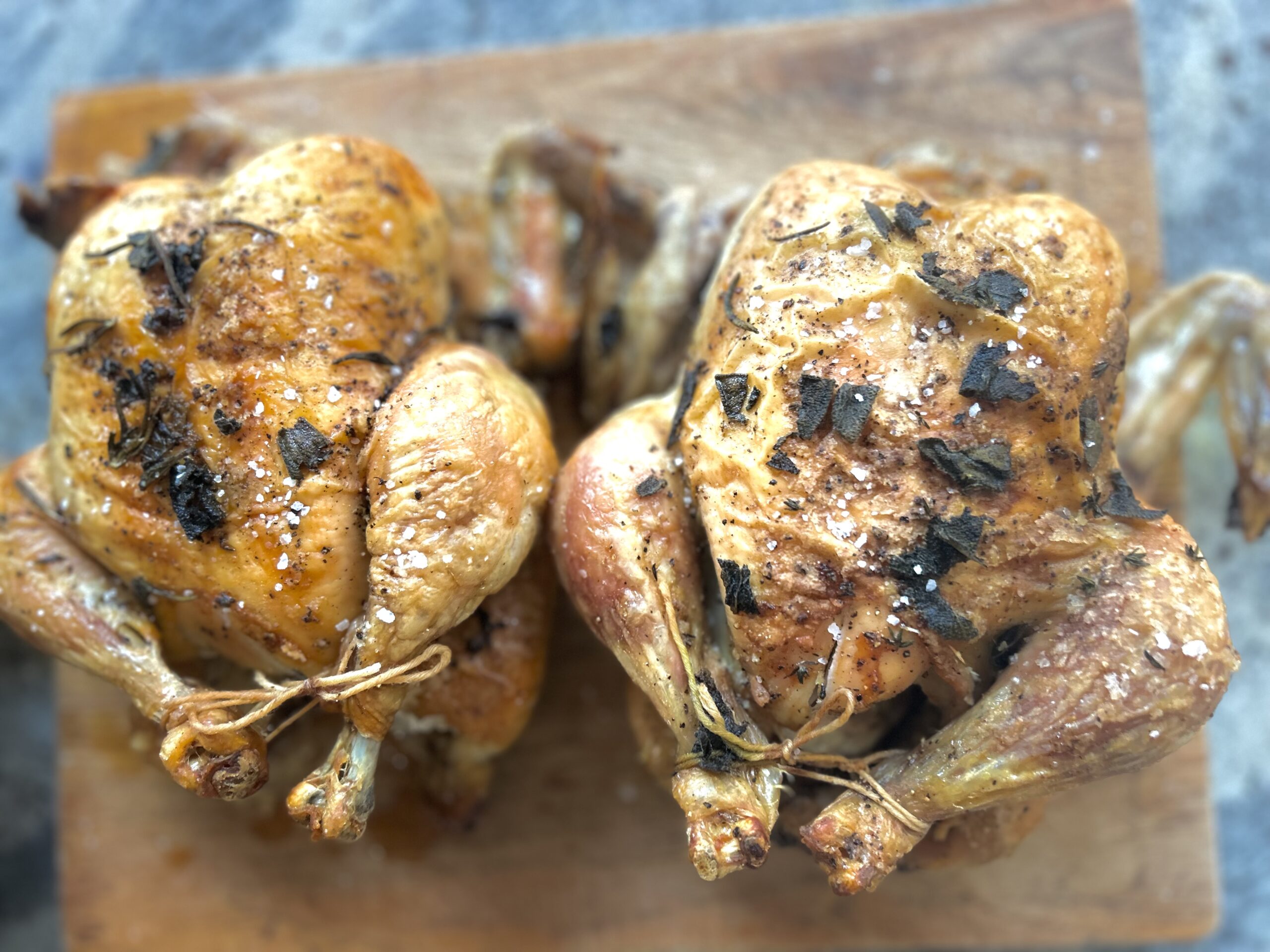
Cooking Tips
This recipe uses Farmer’s Focus Whole Chickens, always organic, humanely raised, working towards a sustainable future for all
Organic is the foundation of how Farmer’s Chicken treats their animals, the planet, and you. Which is why from the high-quality grain they feed their flocks to their delicious seasonings, Farmer’s Focus is always organic, always free from GMOs and synthetic pesticides, and never treated with antibiotics
Farmer’s Focus whole chickens contain a satchel of extra parts that are stuffed in the chicken. This needs to be removed before preparing the chicken to be roasted. The contents which include organs, can be used for a variety of uses, from stock to homemade pet treats.
My rule of thumb when it comes to salt and peppering (and even buttering) the outside of the chicken, is, when you think it’s too much, add more. The suggested measurements in this recipe are on the conservative side and are plenty if you’re topping your chicken with gravy or serving with salty sides. You can always add finishing salt once the chicken is fully roasted.
If I ever have white wine on hand, I always like to add a cup to the roasting pan before putting it in the oven.
To baste or not to baste…that may be the question, but the answer is up to you. In my opinion, it doesn’t change the flavor, but it does change the texture of the skin. In this recipe I did not baste, and you can see the result in the photos. The skin has more of a “fried” texture. Basting your bird will result in a smooth looking and more even colored roast, but less crispy skin.
Oven temperatures and temperaments vary. For example, my oven runs hot, and even hotter in the back of the oven. Make sure to check the temperature of your chicken after 2 hours and turn the roasting pan if you notice one part of the chicken is browning at a much faster rate than another part of the chicken.
To check the temperature, insert a meat thermometer into the thickest part of the chicken breast for an internal temperature of 165 degrees. Make sure you do not come in contact with the bone.
Use every piece of the chicken. The bones can be used for bone broth and leftover meat can be made into roasted chicken salad.
More Recipes
Grass-Fed Beef Stew Skillet Pie
Clean Comfort Cooking with New Morning Market Grass fed cows free-roam the fields of their ranches and eat a diet of fresh grass. Grass fed and grass finished beef, like Thousand Hills Lifetime Grazed 100% Grass Fed Beef, are never fed grain of any kind, resulting in...
Slow Cooked Grass Fed Flank Steak Tacos
Clean Comfort Cooking with New Morning Market Grass fed cows free-roam the fields of their ranches and eat a diet of fresh grass. Grass fed and grass finished beef, like Thousand Hills Lifetime Grazed 100% Grass Fed Beef, are never fed grain of any kind, resulting in...
Grass Fed Muffin Pan Meatloaf
Clean Comfort Cooking with New Morning Market Grass fed cows free-roam the fields of their ranches and eat a diet of fresh grass. Grass fed and grass finished beef, like Thousand Hills Lifetime Grazed 100% Grass Fed Beef, are never fed grain of any kind, resulting in...
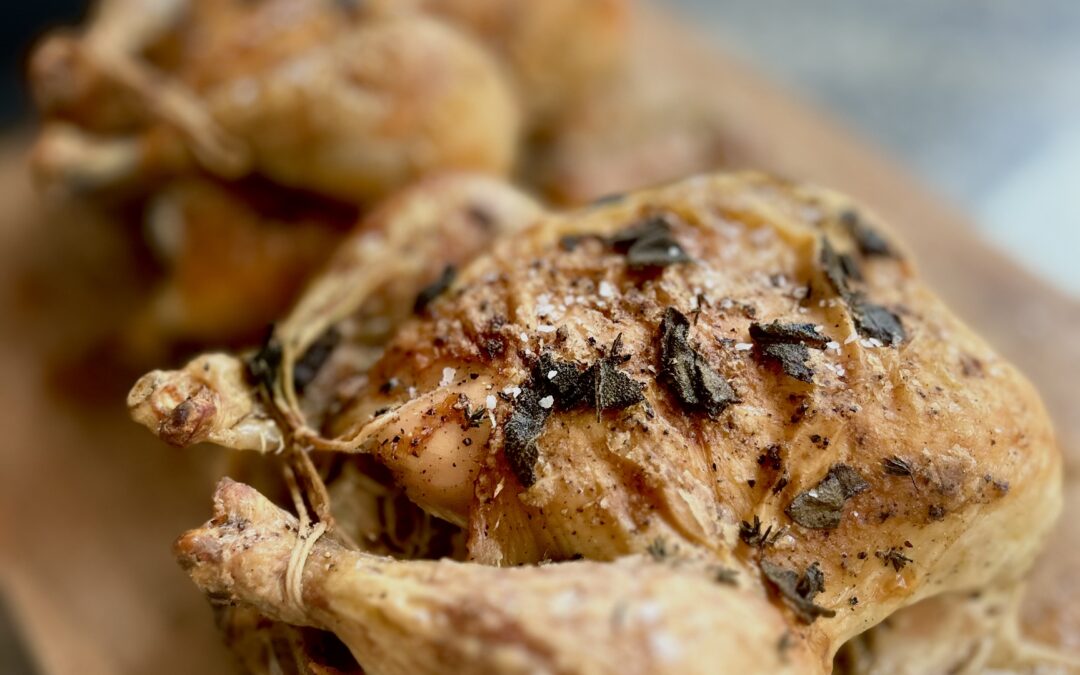
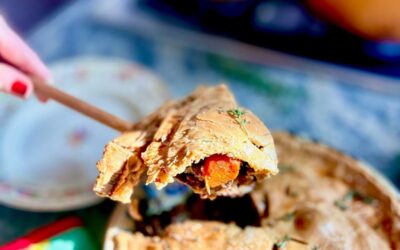
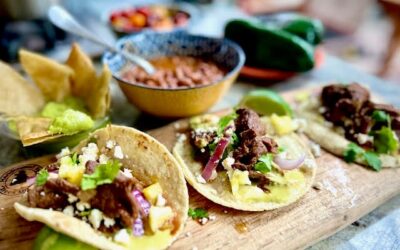
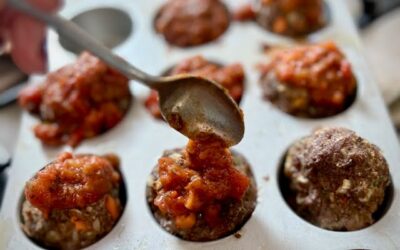
Recent Comments